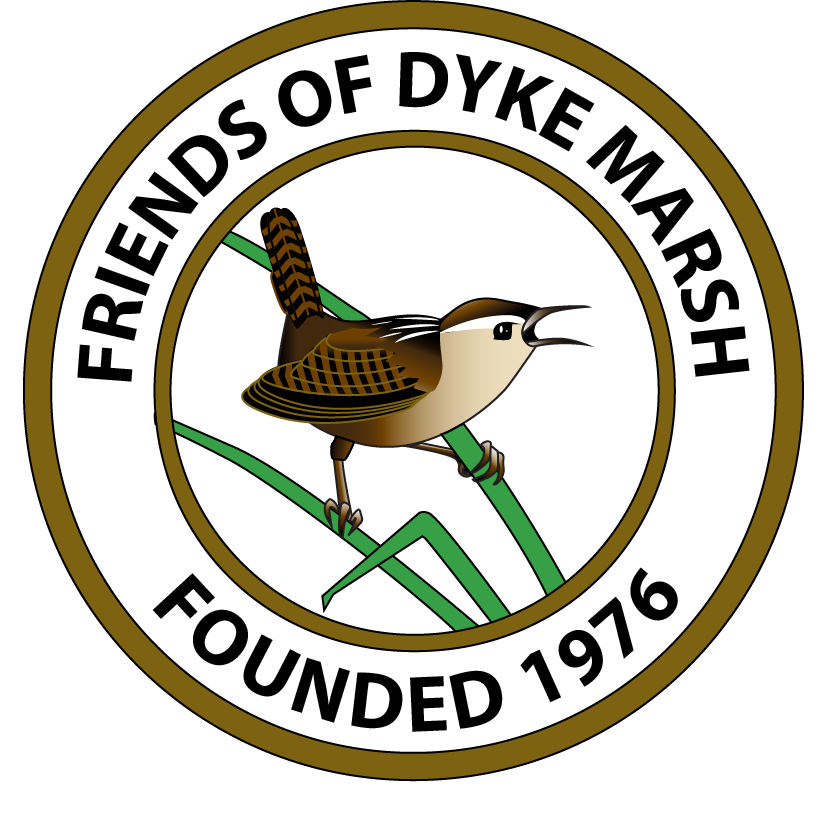On October 25, 2023, naturalist Alonso Abugattas gave a presentation on the reptiles and amphibians of Northern Virginia at a meeting of 85 FODM members and friends.
Here are a few highlights:
Virginia has 71 reptile species, including 25 species and subspecies of turtles. Reptiles have claws and scaly skin on part of all of their bodies or shields.
The woodland box turtle (Terrapene Carolina Carolina), our only land turtle, has a domed carapace or shell and can close itself inside its shell.
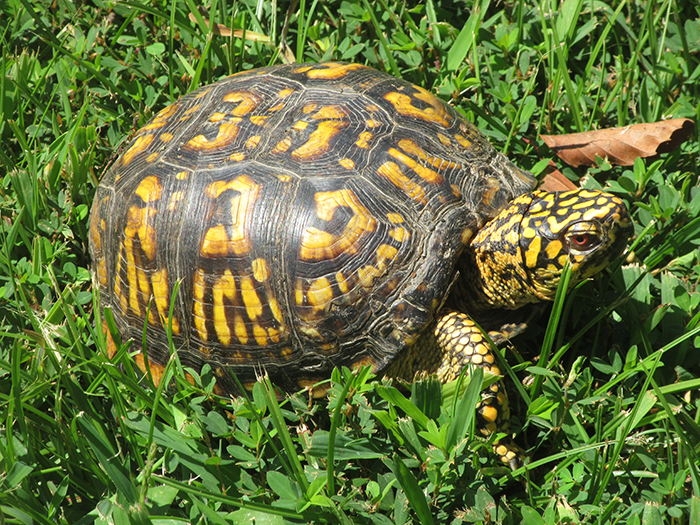 |
| Photo by Glenda Booth All photos below are by Alonso Abugattas. |
Eastern painted turtles (Chrysemys picta picta) have two yellow spots behind their eyes, long front claws and red marks on the bottom of their carapace.
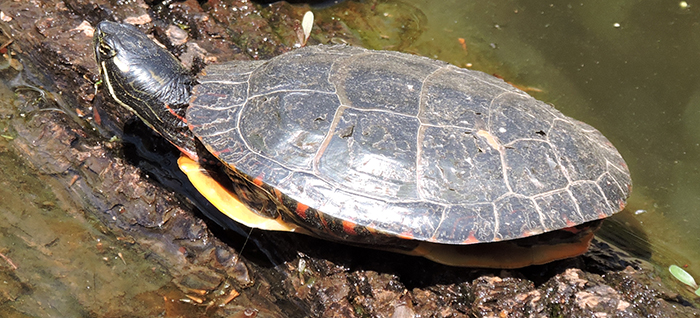
The red-eared slider (Trachemys scripta elegans) is introduced and dubbed the “pet store turtle” and is now the most common turtle worldwide. These turtles typically have a red splotch behind their eyes which gets darker as they age. They compete with native turtles for the same food and nesting and basking sites.
The Eastern snapping turtle (Chelydra serpentine perpentine) is the largest freshwater turtle and can weigh 75 pounds. It has a long neck that cannot fit inside its shell.
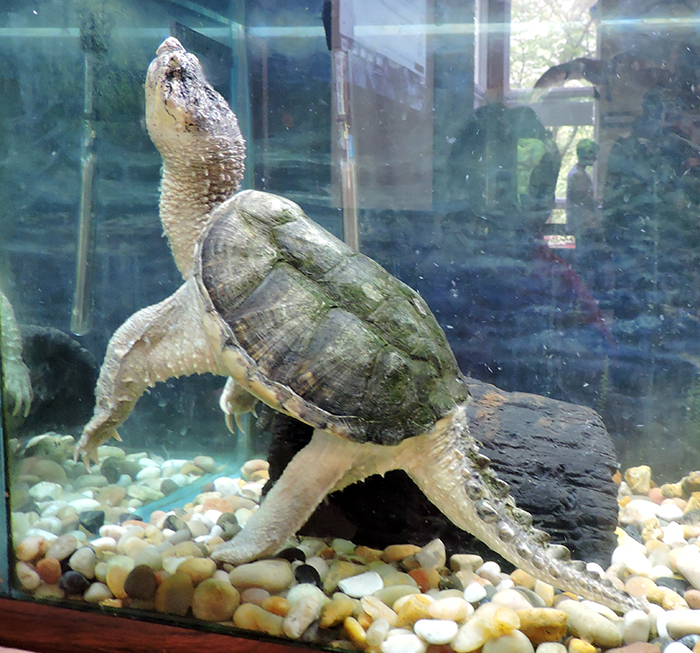
Virginia’s amphibia include 28 frog species, 59 salamander species, nine lizard species and 34 species and subspecies of snakes.
The green frog (Lithobates catesbeianus) is the area’s most common frog.
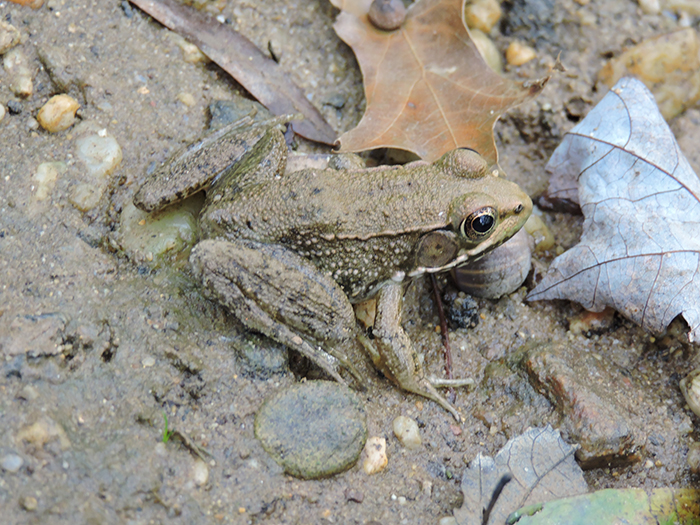
The American bullfrog (Lithobates catesbeianus) is North America’s largest frog, up to eight inches in size. “These are the boys that make all the noise,” Abugattas quipped, but some females also call. “The bullfrog is a mighty predator.”
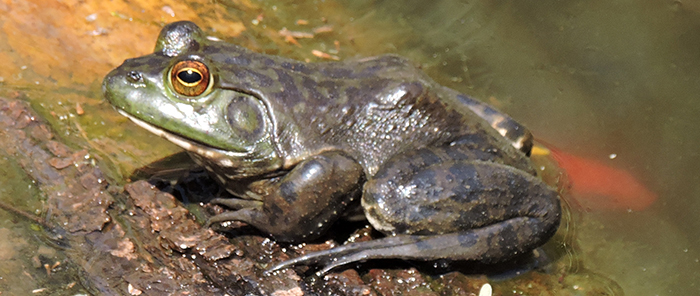
Salamanders can regrow their tails, limbs and organ parts and they eat each other. They do not move very far, so if people destroy their habitat, it could take years for them to return. The Eastern red-backed salamander (Plethodon cinereus), with a reddish stripe on its back, is Northern Virginia’s most common, normally found under woodland logs and debris.
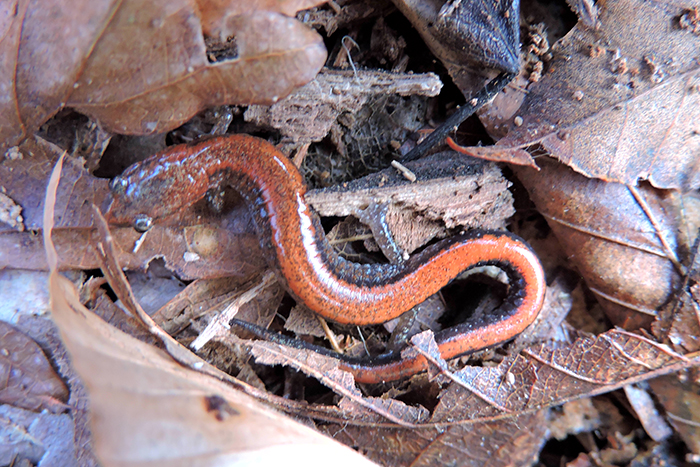
A video of the the Zoom presentation by Alonso can be found here.
